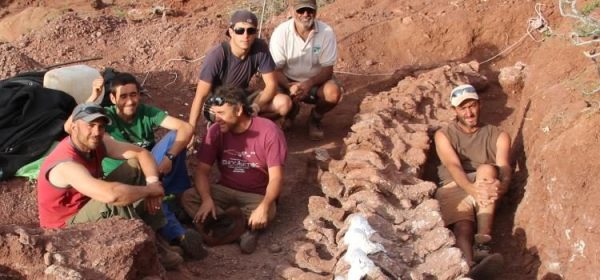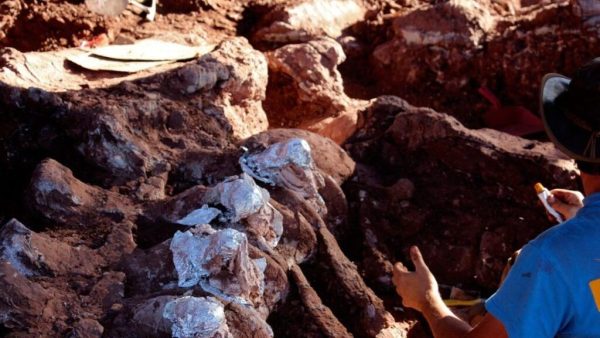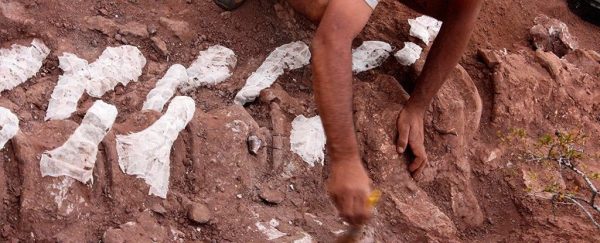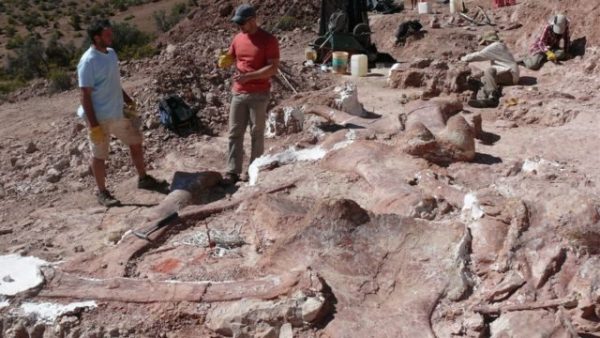Scientists have unearthed massive, 98-million-year-old fossils in southwest Argentina that may belong to the largest dinosaur species ever discovered, according to a statement Wednesday from the National University of La Matanza’s CTYS scientific agency.

The huge fossilized bones belong to sauropods, long-necked, long-tailed, plant-eating dinosaurs – the largest terrestrial creatures to have ever walked the Earth.
Among them, Patagotitan mayorum, also from Argentina, holds the record, weighing in at about 70 tons and measuring 40 meters (131 feet) long, or about the length of four school buses.

Alejandro Otero of Argentina’s Museo de La Plata is working on piecing together the dinosaur from two dozen vertebrae – backbone segments. “We estimate that the individual weighed more than 10 or 15 tons,” said Otero, who also works at the paleontology center of the Lujan River Vertebrate Paleontology Department.
Aljazeera reported on January 20, 2021, that the scientists, during an excavation in 2015, found 98-million-year-old fossils in the Neuquen River Valley, in southwest Argentina. The fossils, buried in rock, continue to be excavated and are extraordinarily well-preserved.

The massive fossil find includes limb bones, vertebrae, and several ribs, with researchers suspecting that the specimen may belong to a sauropod dinosaur, part of the Titanosaur group, that could potentially rival Patagotitan mayorum in size.
The dinosaur’s immense size, long neck, and plant-eating habits are characteristics of the Titanosaur group, making it a significant discovery that may shed light on the diversity and ecology of sauropod dinosaurs during the Late Cretaceous period.

The excavation and study of these fossils could offer valuable insights into the anatomy, behavior, and evolutionary adaptations of these ancient giants, contributing to our understanding of Earth’s prehistoric ecosystems.
Researchers are utilizing advanced techniques such as CT scans and 3D reconstructions to analyze the fossils further. This monumental discovery in Argentina adds a fascinating chapter to the ongoing exploration of Earth’s ancient past.






